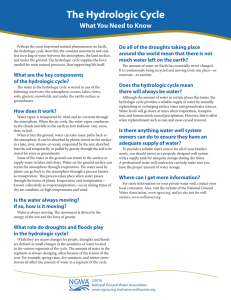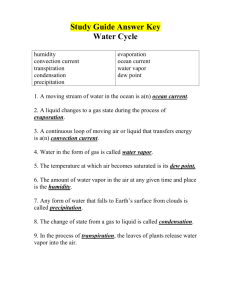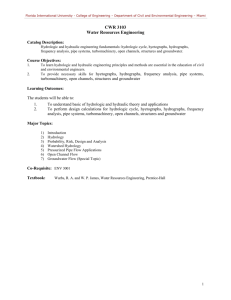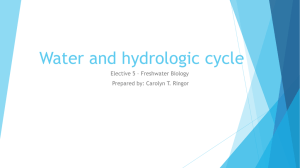Hydrologic review sheet
advertisement
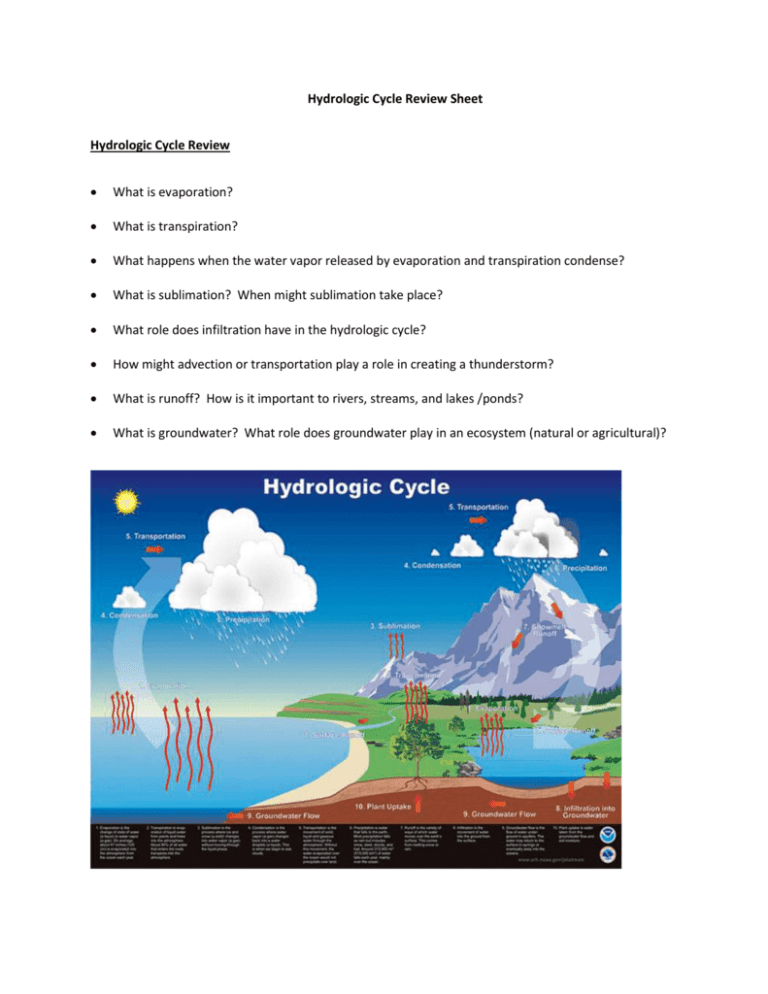
Hydrologic Cycle Review Sheet Hydrologic Cycle Review What is evaporation? What is transpiration? What happens when the water vapor released by evaporation and transpiration condense? What is sublimation? When might sublimation take place? What role does infiltration have in the hydrologic cycle? How might advection or transportation play a role in creating a thunderstorm? What is runoff? How is it important to rivers, streams, and lakes /ponds? What is groundwater? What role does groundwater play in an ecosystem (natural or agricultural)? Hydrologic Cycle Activity (worth 10 points and must be handed in) • Illustrate the hydrologic cycle (use the computer to search for a hydrological cycle diagram that you can use, or use the diagram that is on the last page of this document – which would be easier). – Once you have found a reliable hydrological cycle diagram, identify all of the different components of the cycle. • – • These are on the vocabulary list below and are ten different things. Indicate how they are related via your illustration. You will hand in your labeled illustration along with, either on a different sheet or the back of the one used for the illustration, a definition for each of the 10 vocabulary words. Hydrologic Cycle Vocabulary 1. Evaporation - the process by which water changes from a liquid to a gas or vapor. 2. Transpiration - the process by which moisture is carried through plants from roots to small pores on the underside of leaves (stomata), where it changes to vapor and is released to the atmosphere. 3. Evapotranspiration - the sum of evaporation and plant transpiration from the Earth's land and ocean surface to the atmosphere. 4. Sublimation - the transition of water directly from the solid to the gas phase without passing through the intermediate liquid phase. 5. Groundwater – water held underground in the soil or in pores and crevices in rock. 6. Infiltration (to groundwater) – the portion of water (rain or snow) that is absorbed by the soil and enters the groundwater. 7. Advection (transportation) - the horizontal movement of water—in solid, liquid, or gas states— through the atmosphere. 8. Condensation - the transformation of water vapor to liquid water droplets in the air, producing clouds. 9. Runoff - the variety of ways by which water moves across the land. Moves through ditches, streams, rivers, held in reservoirs, lakes, etc. 10. Precipitation - water vapor that has condensed into clouds and falls to the Earth's surface. This mostly occurs as rainfall, but also includes snow, hail, fog drip, and sleet.

